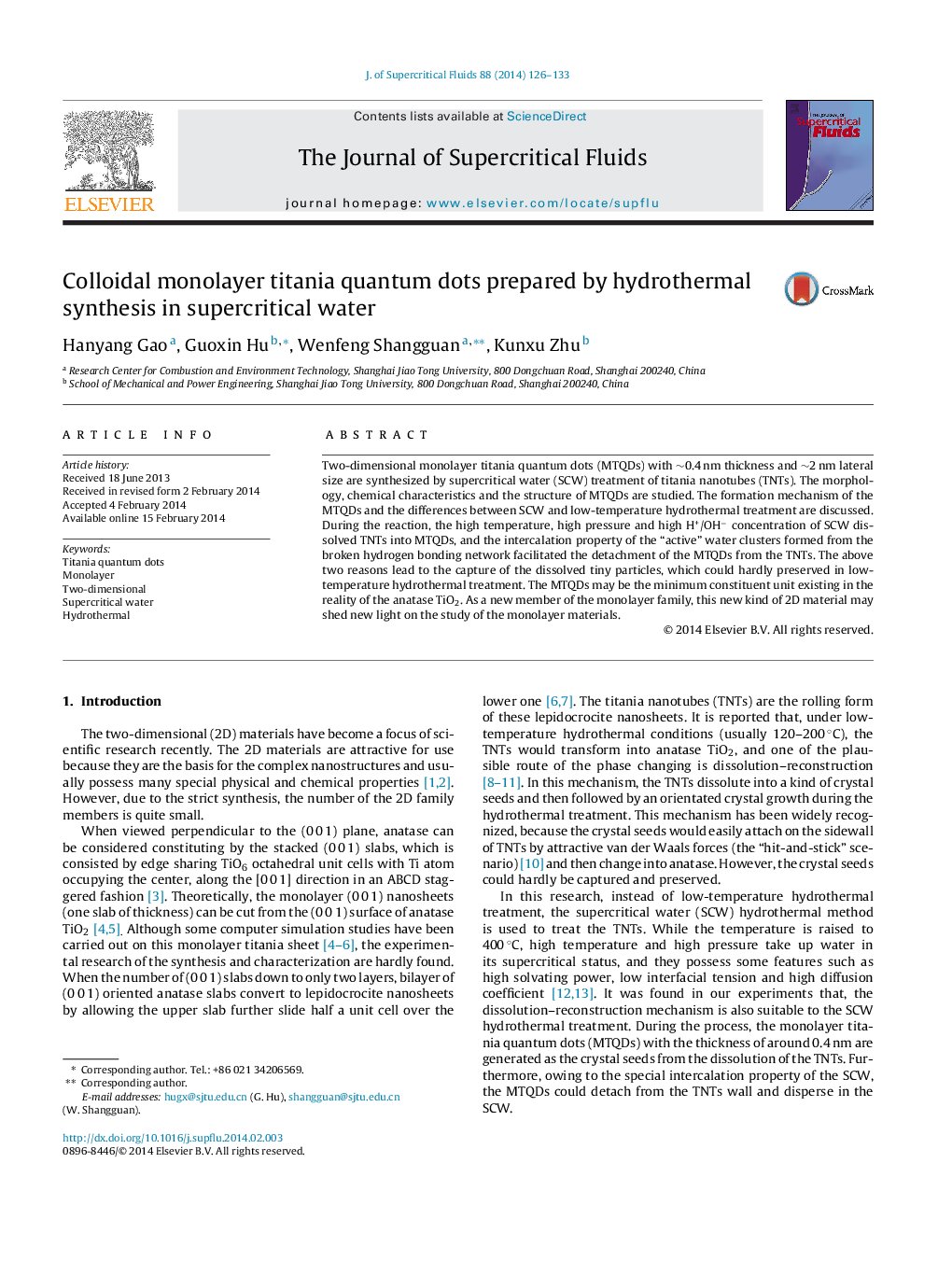| Article ID | Journal | Published Year | Pages | File Type |
|---|---|---|---|---|
| 230577 | The Journal of Supercritical Fluids | 2014 | 8 Pages |
•Novel 2D monolayer titania quantum dots (MTQDs) were synthesized from protonic lepidocrocite titania nanotubes in supercritical water.•The thickness of MTQDs is only ∼0.4 nm and lateral size is ∼2 nm.•PL, UV–vis, Raman properties of MTQDs were different from TNTs and anatase TiO2.•Structure and growth mechanism of MTQDs were discussed.•MTQDs were considered to be the crystal seeds for the phase transition from TNTs to anatase TiO2.
Two-dimensional monolayer titania quantum dots (MTQDs) with ∼0.4 nm thickness and ∼2 nm lateral size are synthesized by supercritical water (SCW) treatment of titania nanotubes (TNTs). The morphology, chemical characteristics and the structure of MTQDs are studied. The formation mechanism of the MTQDs and the differences between SCW and low-temperature hydrothermal treatment are discussed. During the reaction, the high temperature, high pressure and high H+/OH− concentration of SCW dissolved TNTs into MTQDs, and the intercalation property of the “active” water clusters formed from the broken hydrogen bonding network facilitated the detachment of the MTQDs from the TNTs. The above two reasons lead to the capture of the dissolved tiny particles, which could hardly preserved in low-temperature hydrothermal treatment. The MTQDs may be the minimum constituent unit existing in the reality of the anatase TiO2. As a new member of the monolayer family, this new kind of 2D material may shed new light on the study of the monolayer materials.
Graphical abstractFigure optionsDownload full-size imageDownload as PowerPoint slide
